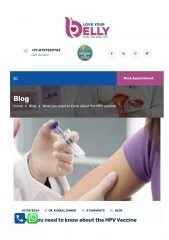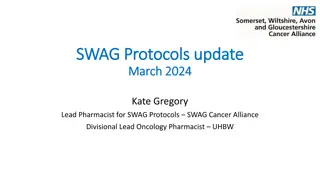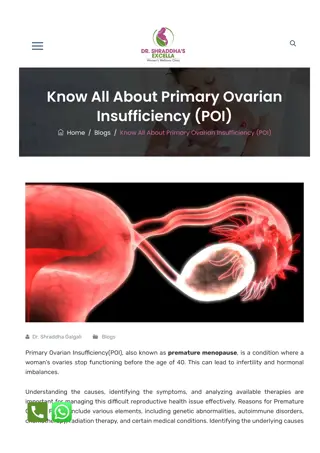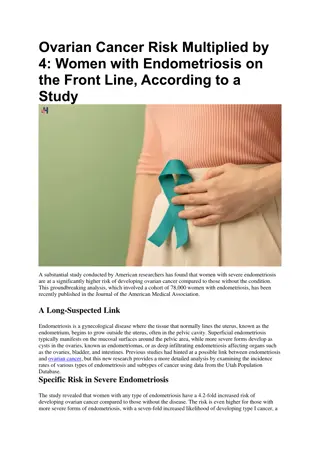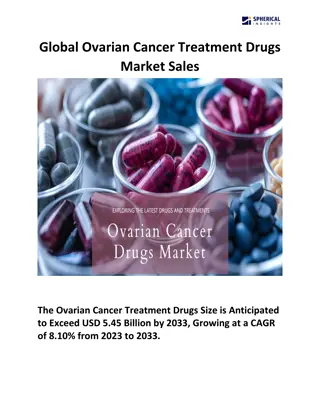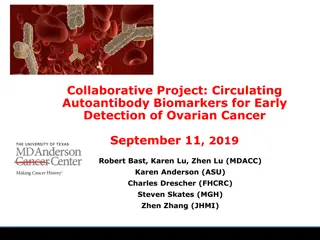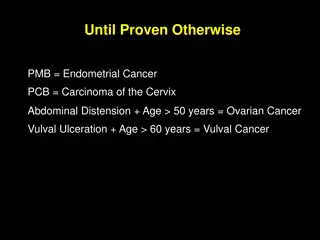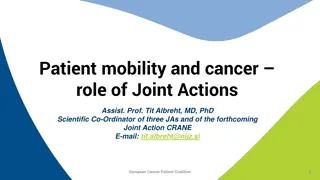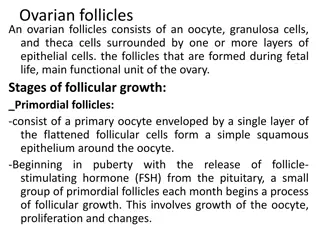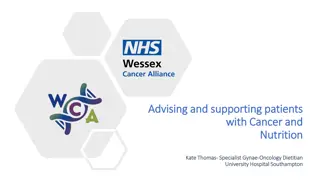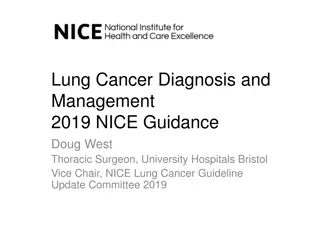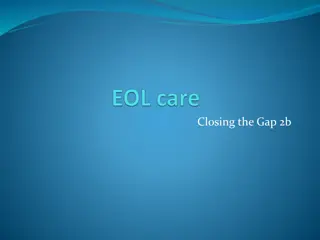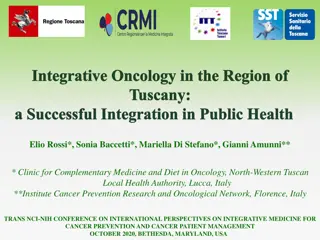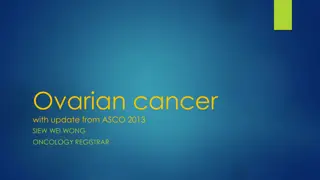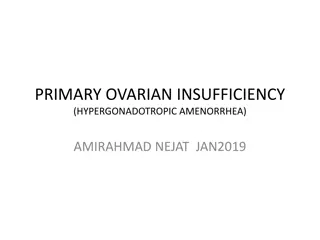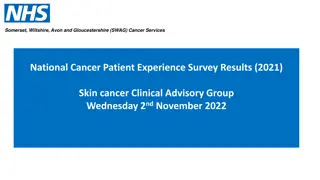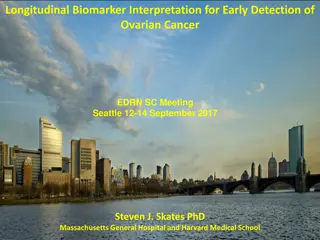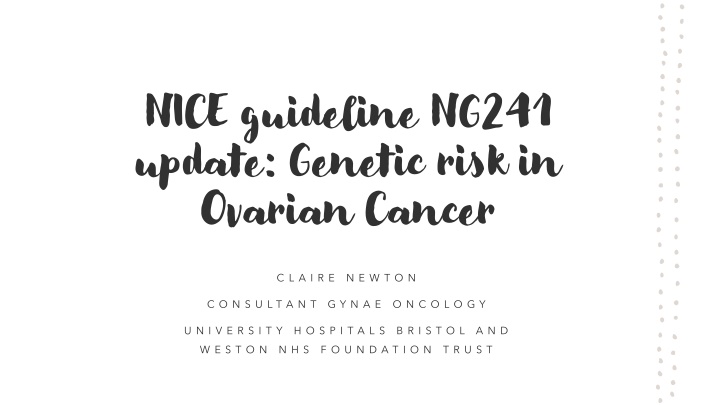
Genetic Risk Update in Ovarian Cancer - Recommendations and Pathways for Care
Stay informed about the latest update in genetic risk assessment for ovarian cancer. Learn about important recommendations, counseling services, referral pathways, and surgical considerations. Ensure access to specialized care and testing for at-risk populations to enhance early detection and prevention strategies.
Download Presentation

Please find below an Image/Link to download the presentation.
The content on the website is provided AS IS for your information and personal use only. It may not be sold, licensed, or shared on other websites without obtaining consent from the author. If you encounter any issues during the download, it is possible that the publisher has removed the file from their server.
You are allowed to download the files provided on this website for personal or commercial use, subject to the condition that they are used lawfully. All files are the property of their respective owners.
The content on the website is provided AS IS for your information and personal use only. It may not be sold, licensed, or shared on other websites without obtaining consent from the author.
E N D
Presentation Transcript
NICE guideline NG241 update: Genetic risk in Ovarian Cancer C L A I R E N E W T O N C O N S U L T A N T G Y N A E O N C O L O G Y U N I V E R S I T Y H O S P I T A L S B R I S T O L A N D W E S T O N N H S F O U N D A T I O N T R U S T
Recommendations Offer pre-test counselling and germline testing to anyone diagnosed with: invasive epithelial ovarian cancer ovarian Sertoli Leydig cell tumour small cell carcinoma of the ovary hypercalcaemic type ovarian sex cord tumour with annular tubules embryonal rhabdomyosarcoma of the ovary ovarian gynandroblastoma. 4/20/2025 2
Recommendations Ensure referral pathways to genetics services for people at risk of having a pathogenic variant associated with ovarian cancer. Suggestions include: online form, Family history Questionnaire to be completed Training and information available for healthcare professionals specifically for underserved communities e.g Trans women, men and non-binary. There should be a familial ovarian cancer multi-disciplinary team (members from Genetics, Gynae Oncology and Gynaecology) with a lead clinician. 4/20/2025 3
Recommendations The familial ovarian cancer MDT should have referral pathways to psychology, menopause, fertility, colorectal, ovarian cancer, breast cancer risk management services Recognise and raise awareness that at risk populations including Ashkenazi Jewish, Sephardi Jewish, or Greenlander should be offered genetic testing even if no personal or family history of ovarian cancer When assessing a person s risk of developing ovarian cancer: use a tool with demonstrated accuracy that includes their age, family history of ovarian and other cancers, and their pathogenic variant (such as CanRisk) 4/20/2025 4
Recommendations When discussing risk-reducing bilateral salpingo-oophorectomy surgery with people who are premenopausal: offer specialist menopause counselling before and after surgery Consider risk-reducing total hysterectomy alone to prevent endometrial cancer for people (no earlier than 45 years) who have: a heterozygous PMS2 pathogenic variant and no family history of ovarian cancer. And consider BSO depending on age, menopausal status, and family history of ovarian cancer 4/20/2025 5
Recommendations Before carrying out risk-reducing bilateral salpingo-oophorectomy, perform a transvaginal ultrasound and a serum CA125 test to minimise the risk of missing asymptomatic ovarian cancer. Before carrying out a risk-reducing hysterectomy, perform an endometrial biopsy to minimise the risk of missing asymptomatic endometrial cancer. 4/20/2025 6
Recommendations If a person is at risk of developing ovarian cancer and chooses to delay or not have risk- reducing surgery, discuss their reasons and explain that: they have an increased risk of developing ovarian cancer and that the only way to reduce their risk is to have risk-reducing surgery delaying risk-reducing surgery should only be seen as a short-term option regular surveillance does not reduce their risk of developing ovarian cancer although regular surveillance means that ovarian cancer may be detected earlier, they should not view surveillance as an alternative to risk-reducing surgery (because there is little evidence on whether this leads to improved outcomes and saves lives) 4/20/2025 7
Recommendations Surveillance will involve them having a blood test every 4 months to check their level of the protein CA125 (cancer antigen 125), with an algorithm to analyse results, and a review at least once a year to discuss the recommendation of having risk-reducing surgery There is a possibility of getting a false-positive or false-negative test result. Only consider surveillance for people in the following groups who are at risk of developing ovarian cancer but who choose to delay or not have risk-reducing surgery over 35 and have a BRCA1 pathogenic variant or over 40 and have a BRCA2 pathogenic variant or over 45 and have RAD51C, RAD51D, BRIP1 and PALB2 pathogenic variants. 4/20/2025 8
Any Questions/ Discussion points? 4/20/2025 9

